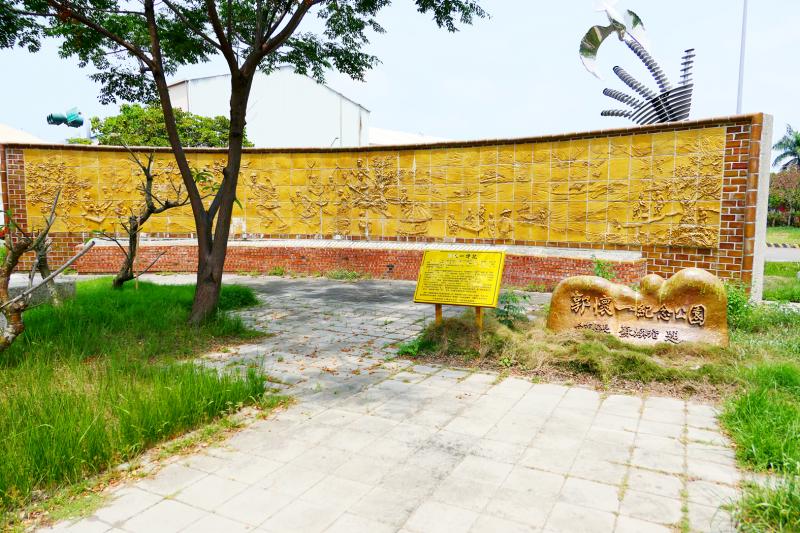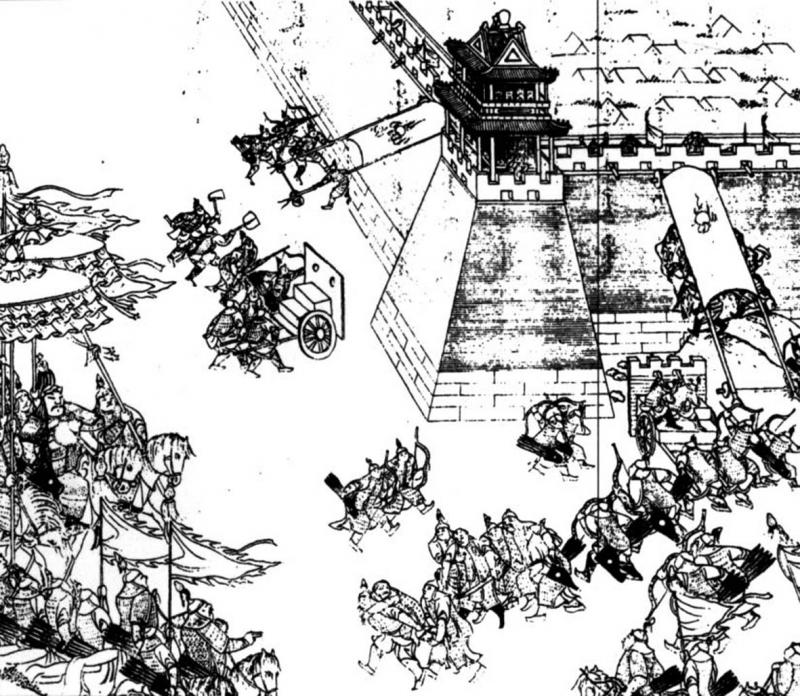In the 17th century, something like a third of the world’s population died.
Geoffrey Parker, in his monumental book on that terrible century, Global Crisis: War, Climate Change & Catastrophe in the 17th Century, itemizes the climate disasters that overwhelmed Europe, Asia, India and the Americas. Japan suffered in 1616 its coldest spring ever, it snowed in Fujian in 1618, and successive waves of drought and flood in India and Europe in the 1620-30s savaged harvests in many countries.
One of the “years without a summer,” 1628, followed 1627, the wettest summer in Europe in 500 years. The 1640s were a time of terrible floods, droughts, and cold around the world, as reflected in global tree ring data. In Scandinavia, 1641 was the coldest year ever recorded.

Photo courtesy of Wikimedia Commons
The second half of the century continued the cruelties of the first. All over the northern hemisphere, 1675 was remembered as another “year without a summer.” In 1683-84, the Thames froze over for weeks, and bull baiting exhibitions were held on the ice. Between 1650 and 1680, the Russian population plunged as harvests repeatedly failed in the face of the coldest autumn-to-spring stretches of the last 500 years and unremitting plagues and warfare.
From China to Catalonia, famine and plague ruled. Populations of towns and cities plunged, tax rolls evaporated, wars, revolutions and revolts broke out, the land and sea were the haunt of bandits and pirates, and cannibalism, infanticide and suicide stalked the poor. Town registers across Europe tell the same story of young males lost to war and populations decimated by plague and plundering.
At least our science, the lineal descendent of Enlightenment inquiry, which, Parker argues, was called into being in part by the succession of crises, does not blame witches (900 accused were slaughtered in south Germany alone after one bout of bitter weather in 1626) or comets.

Photo courtesy of Wikimedia Commons
Numerous lines of evidence show that after 1645 the sun’s output fell, a period known as the Maunder Minimum. The period between 1638 and 1644 saw 12 enormous volcanic explosions around the Pacific, filling the earth’s atmosphere with dust and cooling the planet. Plagues and wars did the remaining damage.
And then there were the taxes.
DEBT-DRIVEN UNREST

Photo courtesy of Wikimedia Commons
Koo Hui-wen (古慧雯) in “Weather, Harvests, and Taxes: A Chinese Revolt in Colonial Taiwan” described how a global phenomenon appearing locally generated the famous revolt of Kuo Huai-yi (郭懷一). All around the world, the succession of failed harvests led those in debt to rise up in the face of taxes (especially new ones to fund the constant warfare) and debts that could not be paid, feeding the toll of death and destabilization.
In the Taiwan case, according to Koo, local Han farmer Kuo had received loans in the form of pepper from the Dutch to finance sugar planting, but 1651 was dry in Taiwan, and the sugar harvest was poor. The loans could not be repaid. Longstanding issues with tax collection and debt were used to rally other farmers, and in 1652 the Han staged their most important revolt of the Dutch era.
The climate crisis also drove the unrest in less direct ways. A series of poor harvests with the attendant food trouble in the 1630s in northeast Asia led Manchu leaders to conclude that they had to “invade China or perish,” as Parker put it. Tree ring data shows that for 1643-44 were the coldest years in East Asia between 800 and 1800, with temperatures falling over 2°C on average throughout the midcentury period. In 1640, north China experienced its worst drought in 500 years.
The Manchu invasion in 1644, in part a product of the climate crisis, heightened the ongoing Ming dissolution. In Taiwan, this disorder and destruction was experienced as a loss of markets: in 1650 the price of venison shipped across the Taiwan Strait collapsed. The Dutch had sold monopolies on the trade in deer products, but even after the colonial authorities lowered the payments, many Han monopoly holders found themselves facing jail for unpaid debts, Koo describes. Revolt must have looked like an inviting alternative.
A poll tax begun in 1639 added to the already unpayable tax burden. Dutch soldiers began preying on civilians, extorting payments in cash or in kind, beating them and entering homes to rob them. This generated bitter resentment.
The Dutch East India Company (VOC) crushed Kuo’s revolt. They fielded veterans against the Han farmers: some 60 percent of their soldiers and sailors were actually German in origin, many the detritus of a floating population set adrift by the savage Thirty Years War from 1618 to 1648.
TWO DEGREES?
In Taiwan we focus on the Dutch Era as part of Taiwan history — part of the way we often fail to background Taiwan history against the global events that drive it — but for the Spanish and Dutch, Taiwan was part of an overall strategy for monopolizing the trade along the China coast and the whole corridor from the Moluccas (now the Maluku Islands in Indonesia) to Japan as Jose Eugenio Borao has described in “‘Intelligence-gathering’ episodes in the ‘Manila-Macao-Taiwan Triangle’ during the Dutch Wars.”
In 1618, the Dominican emissary Bartolome Martinez, after a trip to Macau to purchase ammunition and warn the Chinese not to send ships to Manila that fall, in 1619 suggested the Spanish put in a fort in Pacan (likely Beigang in what is now Tainan) to help with the regular Dutch blockades of Manila and protect the trade with China.
This would have made Taiwan an appendage of Manila and its markets, and perhaps the Spanish and not the Dutch would have colonized Taiwan. Perhaps today Taiwan would be regarded as one more island of the Spanish Philippines. Instead, in 1623 the Chinese proposed to the Dutch they relocate to Taiwan, and the rest was history.
In Europe, the terrible century ground on. In 1640, the Spanish and the Dutch went to war again, and this time the Dutch evicted the Portuguese from Malacca and took the Spanish fort in Keelung (with guns taken from Malacca) the following year.
In 1641, Portugal became independent, Phelim O’Neill and Rory O’Moore, deeply in debt, led the Irish in revolt after a bad harvest, the Nile fell to the lowest level ever recorded, and 12 years of drought began in the Canadian Rockies. Spain itself commenced a decade wracked by revolts, skyrocketing food prices, endless social disorder and equally endless war.
All these agonies were caused by a tiny drop in solar radiation combined with volcanism that varied temperatures just 1 to 2°C for the century.
Isn’t there a famous goal that calls for limiting temperature change to 2°C?
Notes from Central Taiwan is a column written by long-term resident Michael Turton, who provides incisive commentary informed by three decades of living in and writing about his adoptive country. The views expressed here are his own.

A vaccine to fight dementia? It turns out there may already be one — shots that prevent painful shingles also appear to protect aging brains. A new study found shingles vaccination cut older adults’ risk of developing dementia over the next seven years by 20 percent. The research, published Wednesday in the journal Nature, is part of growing understanding about how many factors influence brain health as we age — and what we can do about it. “It’s a very robust finding,” said lead researcher Pascal Geldsetzer of Stanford University. And “women seem to benefit more,” important as they’re at higher risk of

Eric Finkelstein is a world record junkie. The American’s Guinness World Records include the largest flag mosaic made from table tennis balls, the longest table tennis serve and eating at the most Michelin-starred restaurants in 24 hours in New York. Many would probably share the opinion of Finkelstein’s sister when talking about his records: “You’re a lunatic.” But that’s not stopping him from his next big feat, and this time he is teaming up with his wife, Taiwanese native Jackie Cheng (鄭佳祺): visit and purchase a

Experts say that the devastating earthquake in Myanmar on Friday was likely the strongest to hit the country in decades, with disaster modeling suggesting thousands could be dead. Automatic assessments from the US Geological Survey (USGS) said the shallow 7.7-magnitude quake northwest of the central Myanmar city of Sagaing triggered a red alert for shaking-related fatalities and economic losses. “High casualties and extensive damage are probable and the disaster is likely widespread,” it said, locating the epicentre near the central Myanmar city of Mandalay, home to more than a million people. Myanmar’s ruling junta said on Saturday morning that the number killed had

Mother Nature gives and Mother Nature takes away. When it comes to scenic beauty, Hualien was dealt a winning hand. But one year ago today, a 7.2-magnitude earthquake wrecked the county’s number-one tourist attraction, Taroko Gorge in Taroko National Park. Then, in the second half of last year, two typhoons inflicted further damage and disruption. Not surprisingly, for Hualien’s tourist-focused businesses, the twelve months since the earthquake have been more than dismal. Among those who experienced a precipitous drop in customer count are Sofia Chiu (邱心怡) and Monica Lin (林宸伶), co-founders of Karenko Kitchen, which they describe as a space where they